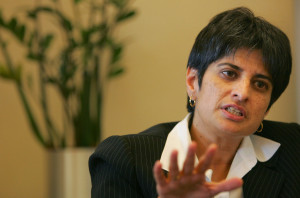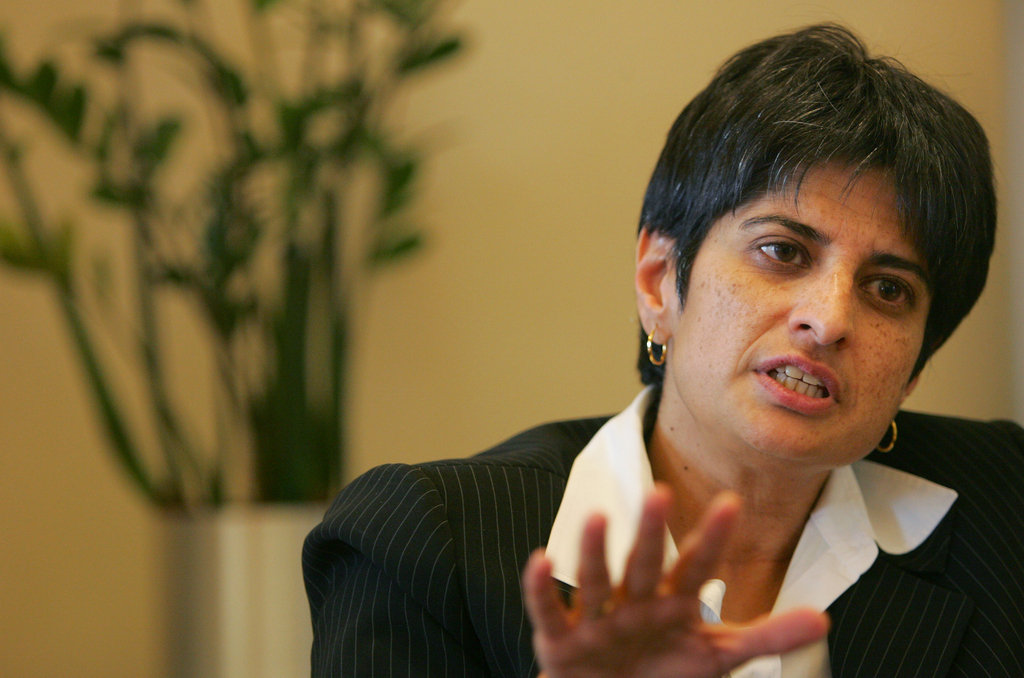 Irresistible Revolution: Confronting Race, Class and the Assumptions of LGBT Politics
Irresistible Revolution: Confronting Race, Class and the Assumptions of LGBT Politics
by Urvashi Vaid
Magnus Books. 238 pages, $21.95
IRRESISTIBLE REVOLUTION collects nine essays, each an expanded and updated version of a lecture given by author Urvashi Vaid. Taken together, they make the case that the current run of political victories for the GLBT movement has come at the cost of many of the ideals it was once founded upon. No longer a progressive movement working for racial, gender, and economic equality (along with reproductive freedom, environmental justice, and so on), “GLBT politics” currently appears to be throwing most of its weight into marriage equality and short-term political gains with very little thought for the long view. Also neglected are the “B” and “T” components of the GLBT movement.
As a movement veteran—Vaid was the executive director of the Gay & Lesbian Task Force in the 90s—the author finds herself weighing the current gains with equal parts hope and caution. “This is a mixed moment for GLBT liberation,” she writes in the introduction. “We are more visible than ever, and yet even today, large numbers of our people remain closeted, silent, and uninvolved.” These essays seek to reshape the movement by locating its history in the larger fight for social justice waged by other minorities. The time has come to “move beyond seeking the reform of laws to maximizing the life-chances, freedom, and self-determination of all LGBT people.”
 A piece titled “What Can Brown Do For You?” opens with Vaid confessing to several false starts before arriving at the speech she finally delivered at CUNY in November 2010. One of them was so angry in tone that her partner, comedian Kate Clinton, suggested she use it to launch an online follow-up to the “It Gets Better” project called “I Get Bitter.” The finished piece makes her point and doesn’t spare any frustration. The potential unleashed by the election of President Obama in 2008 failed to cohere into a united progressive political movement, leaving instead a nation of niche cause activists. Vaid notes that she’s been giving versions of this particular speech for two decades, arguing that the movement needs to work on racial justice and include it as a core value, but finds that it meets with resistance from whites who view it as a “diversion” from a larger cause.
A piece titled “What Can Brown Do For You?” opens with Vaid confessing to several false starts before arriving at the speech she finally delivered at CUNY in November 2010. One of them was so angry in tone that her partner, comedian Kate Clinton, suggested she use it to launch an online follow-up to the “It Gets Better” project called “I Get Bitter.” The finished piece makes her point and doesn’t spare any frustration. The potential unleashed by the election of President Obama in 2008 failed to cohere into a united progressive political movement, leaving instead a nation of niche cause activists. Vaid notes that she’s been giving versions of this particular speech for two decades, arguing that the movement needs to work on racial justice and include it as a core value, but finds that it meets with resistance from whites who view it as a “diversion” from a larger cause.
Later pieces note that much of the political action in the GLBT community comes from a small handful of organizations with (mostly) white male boards who are primarily concerned with their (mostly) rich and white donors. This precludes much awareness of diversity and creates a false perception that the queer community is a moneyed elite, when there’s significant poverty in our ranks as well. Vaid offers suggestions for changes that run from the grassroots up to the organizational level, where many nonprofits have no explicitly stated diversity goals for board membership or inclusion in political outreach campaigns. She incorporates lessons gleaned from the lesbian-feminist movement of the 1970s, where it was taken for granted that any major event would be translated by sign language interpreters (and the popcorn would have brewer’s yeast sprinkled on top to prevent B-12 deficiency).
While most of these pieces directly critique the current GLBT movement, Vaid is quick to point out that their work has brought us to where we are today: “The mainstream legal and political organizations in the LGBT community are very important and credible. They have my support. But they are not the full representation of the LGBT community or its views.” Our revolution may have made itself irresistible by selling ad space to the highest bidder and glorying in our co-optation, she insists, but human rights require advocacy and activism, not banner ads. Making our politics more inclusive will not only make us stronger at the ballot box, it can lead to a world where we’re each safer in our own skin. ________________________________________________________
Heather Seggel is a freelance journalist who lives and works in Ukiah, California.





